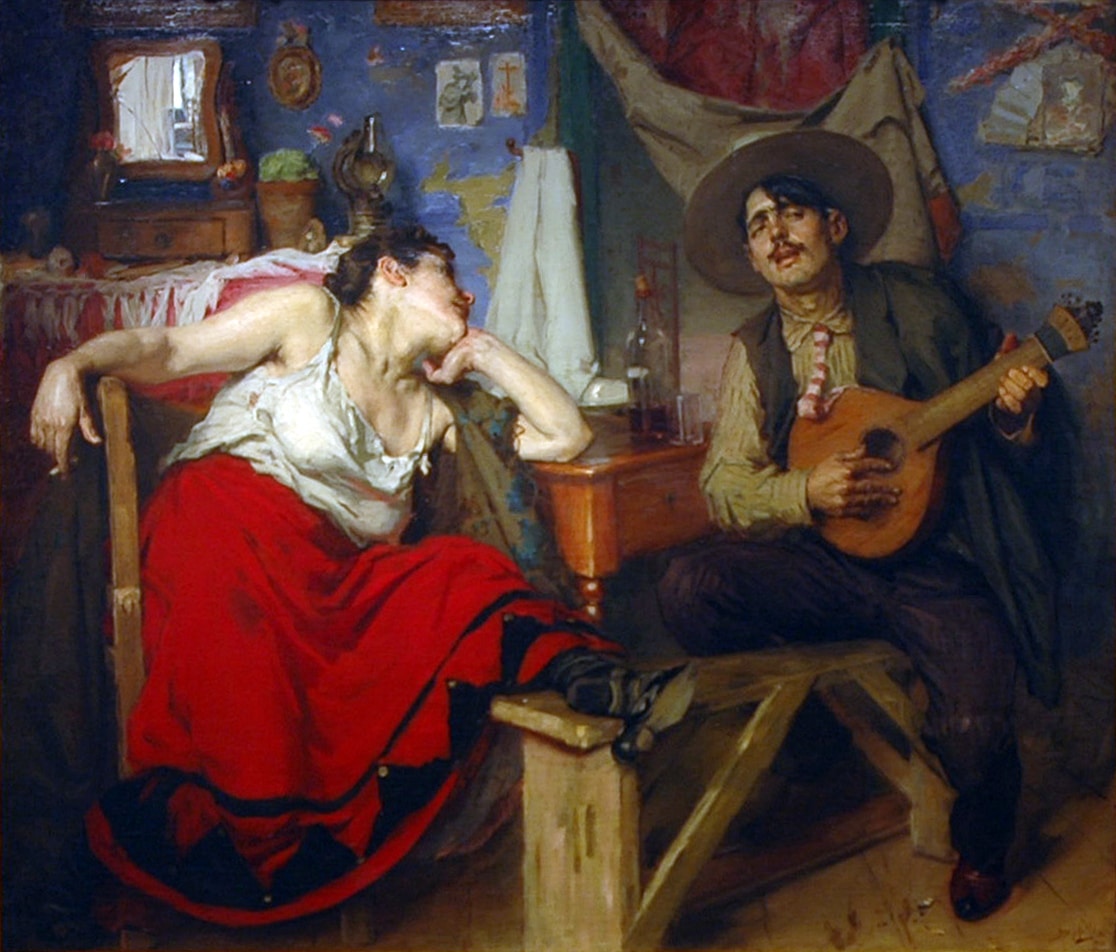In 2011, UNESCO declared the musical genre as being an Intangible Cultural Heritage of Humanity
Scene 1: Mid-20th century Lisbon, city of intrigue and espionage. A candle-lit, smoke-filled cellar bar in the Alfama district with a small stage on which two musicians strum viola and Portuguese guitar to compete with the raucous chatter and chink of glasses. Enter a sombrely clad brunette to polite applause; her hands nervously twitch a shawl; her bosom heaves and a hush greets a swelling magnificent contralto voice which sings a story of lost fishermen and their lovers.
Scene 2: Early 21st century Porto. A brightly illuminated, smoke-free recording studio. The two musicians now backed by a small orchestra. A blonde enters with hair tightly coiffured and wearing a close fitting, glittering gown. The voice swells and we hear a tale of passion and unrequited love.
Scene 3: A busy street in present-day Coimbra thronged with tourists who hear the strident music belted forth from a “ghetto blaster” on a cart from which genuine fake CDs of pirated tracks featuring mainly female vocalists are cheaply offered as being true examples of traditional Portuguese music.
This is Fado – old, new and popular styles.
No-one is quite sure of its derivation. Some say it evolved from the Afro-Brazilian culture of modinhas and lundu which combined into “fado-dançado”. Others that it has roots in the music of the Judeo-Arabic Moors who brought a Sephardic culture to southern Iberia. Still more claim an origin from the former African colonies.
What is probable is that all three sources were interlaced during the past 200 years of Portuguese history as a maritime power bringing together a musical melting pot of folk song and sea shanties.
At the end of the 19th century, the genre was to be found mainly in the major ports of Lisbon and Porto. The musicologist Ernesto Vieira (1890) tells us that outside of these two cities (and Coimbra), countryfolk preferred music which was “very different” and that, in the southern provinces, fado was almost unknown.

There remains only a sparse written record of the music, but references in news reports and letters show that the genre belonged almost exclusively to poor people who would spontaneously sing with emotion of the vicissitudes of eking out a living in difficult times.
With the advent of radio and gramophones, the popularity of fado spread quickly both among the working class (operários) who introduced librettos with socialist themes and the bourgeoisie who added the repertoire to the entertainment in their salons. Even the aristocracy took a benevolent interest and, gradually, Fado assumed its national role as an icon of Portuguese culture.
Its importance was recognised by the Estado Novo even after the introduction of the censorship laws in 1927, which stipulated that the characteristics of the political protest song must be eliminated and the librettos re-invented to praise the virtues of national history – both royal and republican.
Many regard the years from 1950 to 1980 as being the Golden Age of Fado, with a galaxy of artists performing in the traditional fado houses and the new-fangled media of cinema and television.
They were led by the incomparable Amália Rodrigues, an innovator who introduced changes in the tenor of each performance without damaging the essential character of fado. It was she who first wore the iconic shawl and black gown and positioned herself to the fore of her musicians.
A good example of this may be seen in the 1979 series “Tinker, Tailor, Soldier, Spy” where a British MI5 agent, Ricki Tarr, observes Russian master-spy Boris in a Lisbon night club while Amália sings enchantingly “Estranha Forma da Vida” backed by a suitably attired orchestra.
With the millennial generation and the proliferation of digital communication, there came about a revelation in the performance and presentation of all music. Fado was included in World Music and led to festivals being held in Spain, Brazil and other Latin countries.
More recently, the Portuguese State has enshrined Fado as a symbol of national identity and this classification has strengthened institutional support. In 2011, UNESCO declared the musical genre as being an Intangible Cultural Heritage of Humanity.
Inevitably, mass tourism and immigration have taken their toll of this fascinating subject. Modernised Fado houses still exist in their historic riverside locations but with a renovated presentation to suit international expectations of undergoing an “experience” complete with singalong karaoke and the sale of kitsch.
Portuguese aficionados have long fled (read re-housed) to the cheaper suburbs or villages and have taken with them those almost indefinable sensations of saudade.
For full information concerning historic and present-day Fado, one should contact the Museu do Fado in Lisbon located at Largo de Chafariz de Dentro nº 1. But for a more intimate immersion, go to Amália’s former home at Rua de São Bento nº 193, which houses extraordinary memorabilia of a lifetime devoted to this noble genre of which she was the undisputed Queen.
Scene 4: The grand auditorium of the Fundação Calouste Gulbenkian in Lisbon on December 14, 2016. The highly accomplished group Os Músicos do Tejo is giving a performance using period instruments entitled “From Baroque to Fado – A Journey Through Portuguese Music”. The vocalists are Ana Quintans and Ricardo Ribeiro whose interpretations are superb. If you wish to broaden your knowledge of this Portuguese music, I recommend the acquisition of the CD – reference 8.573875 Naxos.

|| features@portugalresident.com
Roberto Cavaleiro has been a citizen of Portugal since 1989. Until 2002 he was very active in the watersports industry both as a distributor of boats and equipment and as the owner of O Clube Náutico do Zêzere the first purpose-built centre where national competitions and training sessions were organized for wakeboard, water-ski, jet-ski, dinghy sailing and triathlon. As a nonagenarian now in retirement he is an active essayist, documentarian and poet.




















